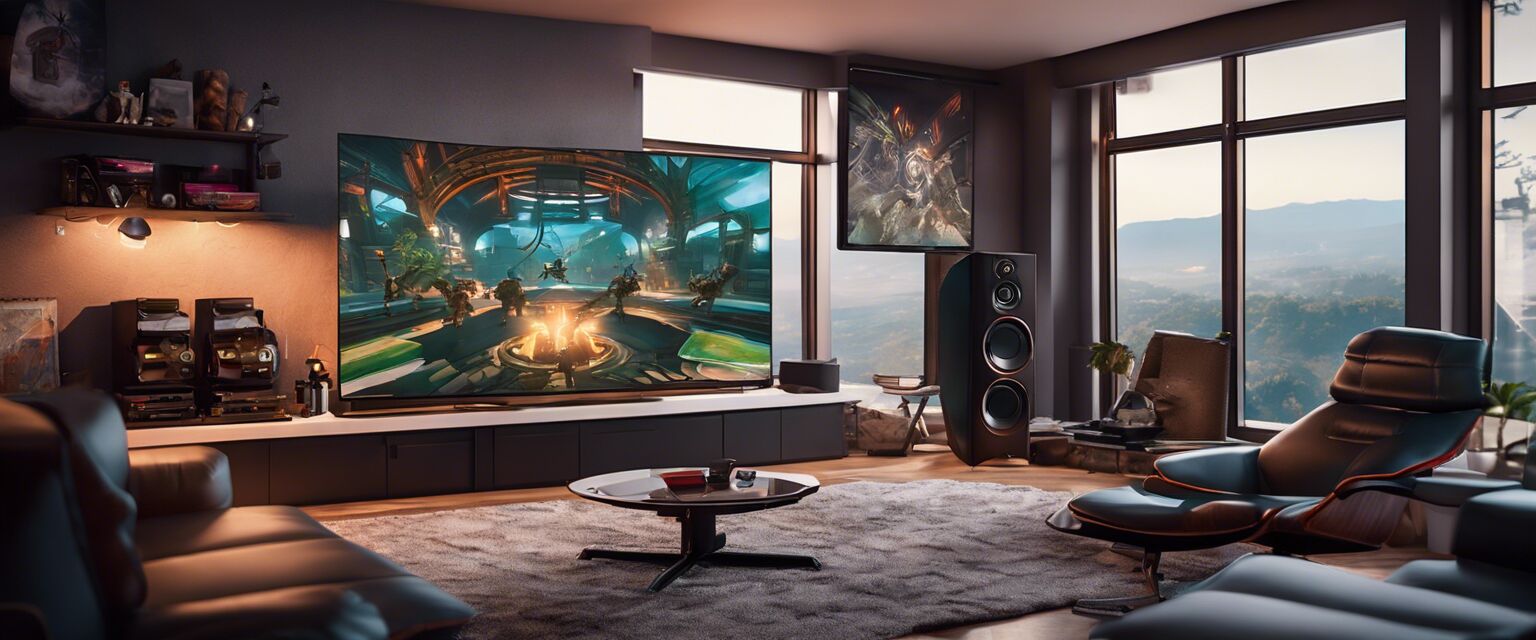
How to Choose the Right Resolution for Your Gaming TV
Key Takeaways
- Understand the differences between 1080p, 4K, and 8K resolutions.
- Consider the size of your gaming area when choosing resolution.
- Higher resolution can enhance visual clarity, especially for large screens.
- Refresh rates and input lag are also crucial factors in gaming TVs.
- Evaluate your gaming habits and budget before making a decision.
Choosing the right resolution for your gaming TV is essential to enhance your gaming experience. With the advancements in technology, the choices can be confusing. This guide will break down the main TV resolutions available and help you understand which is best for your gaming needs.
Understanding TV Resolutions
Televisions come in various resolutions, which refer to the number of pixels that make up the image. The common resolutions you will encounter are:
| Resolution | Pixel Count | Aspect Ratio |
|---|---|---|
| 1080p (Full HD) | 1920 x 1080 | 16:9 |
| 4K (Ultra HD) | 3840 x 2160 | 16:9 |
| 8K (Ultra HD) | 7680 x 4320 | 16:9 |
As you can see, as the resolution increases, so does the pixel count, which results in sharper and more detailed images. However, it's essential to know what each resolution means in practical terms for gaming.
1080p - Full HD
1080p is the entry point for modern gaming TVs. It provides clear images for casual gamers and is often sufficient for smaller screens. If you mainly game on a smaller TV or monitor, 1080p is still a viable option.
4K - Ultra HD
4K resolution has rapidly become the standard for serious gamers. The higher pixel density provides significantly better visuals and immersion, making it ideal for larger screens.
8K - Ultra HD
While 8K televisions are available, the content specifically designed for 8K gaming is still sparse. If you're looking for future-proofing, and don't mind awaiting more 8K game titles, this may be an option worth considering.
Considerations for Choosing the Right Resolution
1. Screen Size
The size of your gaming TV is a crucial factor in determining the resolution you should choose. Here’s a general guideline:
| Screen Size | Recommended Resolution |
|---|---|
| Up to 32 inches | 1080p |
| 32 to 55 inches | 4K |
| 55 inches and above | 4K or 8K |
2. Viewing Distance
Your distance from the TV also plays a significant role in the resolution you should choose:
- For 1080p, sit at least 5 feet away.
- For 4K, sit at least 3.5 feet away.
- For 8K, you can sit even closer, around 2 feet.
3. Content Availability
Consider what type of games you play. If you’re mostly gaming in 4K, investing in a 4K TV is a wise choice. On the other hand, if your gaming content is primarily 1080p, then that’ll suffice.
Other Important Features to Consider
While resolution is key, it’s not the only factor to evaluate:
- Refresh Rate: Higher refresh rates (120Hz or above) are better for fast-paced gaming.
- Input Lag: Low input lag (under 20ms) is essential for ensuring your actions in-game are registered immediately.
- HDR Support: HDR (High Dynamic Range) gives you more depth of color and detail.
Pros
- Higher resolutions improve image clarity and detail.
- 4K TVs are becoming more affordable.
- Future-proofing with higher resolution TVs can enhance your long-term experience.
Cons
- 8K TVs can be significantly more expensive.
- Limited content available in higher resolutions.
- Requires more powerful gaming hardware for 4K and 8K gaming.
Conclusion
Ultimately, the right resolution for your gaming TV depends on several factors including screen size, viewing distance, and specific content you enjoy. By understanding these elements, you can make an informed decision. For more information on choosing a gaming TV, check out our Buying Guides.
